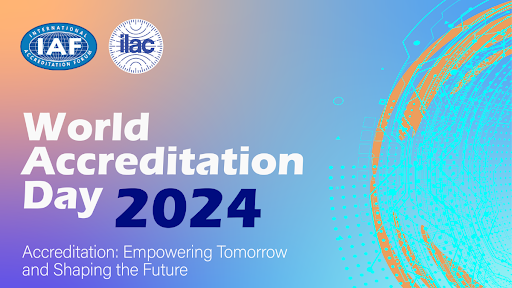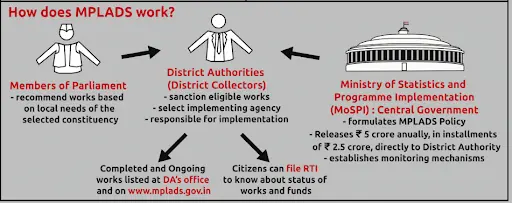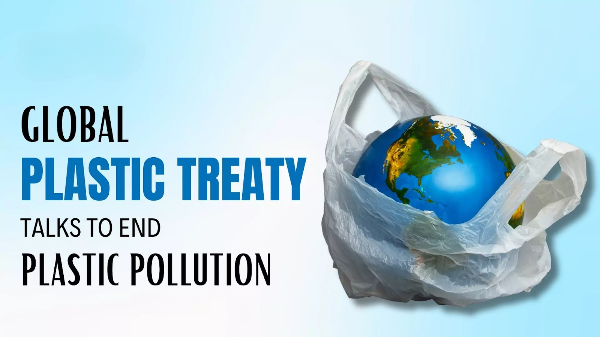Thursday, 13th June 2024
India’s Looming Financial Crisis
Why in the news ?
- India is presently witnessing a credit boom fueled by optimism surrounding the country's digital infrastructure and financial innovations.
- The 2024 review of the National Council of Applied Economic Research cheered a 20% increase in banks.
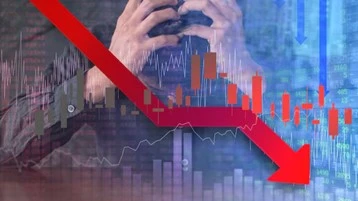
IMF Projections on India's Economic Growth:
- Current Economic Position: India is currently the fifth-largest economy in the world in U.S. dollar terms.
- Future Projections: The IMF projects that India will become the third-largest economy globally by 2027.
- Growth Rate Leadership: India has achieved the highest growth rate among G20 countries, surpassing China's growth rate for two consecutive years.
- Historical Growth Milestones:
- From historical data, India took six decades (1947 to 2007) to cross the one trillion-dollar GDP mark in 2007 (reaching $1.2 trillion).
- It took just seven years for India to double its GDP to $2 trillion by 2014.
- Subsequently, India added another $1.2 trillion by 2021, showcasing accelerated economic growth.
- Projected Growth Trajectory: If India achieves the IMF's projected GDP figure of $5.2 trillion by 2027, it would imply adding $2 trillion in just six years
A Lofty and Dangerous Narrative about the Indian economy:
- Exaggerated Optimism on Digital Infrastructure: Policymakers are overly optimistic about India's digital infrastructure as a driver of financial innovation and inclusive growth, promising economic expansion and equality.
- Enabling Poor Financial Practices: Unregulated financial sector encouraged by optimistic narratives, leading consumers to overextend financially, resulting in a surge in lending, especially personal loans.
- Misleading Applause from Analysts: International and domestic analysts, including the IMF and National Council of Applied Economic Research, applaud the surge in bank lending, particularly personal loans, as a positive indicator despite challenges in industrial lending.
- Neglect of Fundamental Issues: Emphasis on credit growth overlooks critical issues like job deficits and human capital shortages. The appearance of financial stability persists as new loans repay old ones, masking underlying vulnerabilities that could surface if lending slows.
- Boom in Household Debt: Rapid annual expansion of household lending at 25% to 30% viewed as easy cash for lower- and middle-income households, fueling non-productive spending and inflation without enhancing competitiveness.
- Economic Risks and Warning Signs: Economists caution that mounting household debt burdens could lead to severe economic downturns. Concerns are compounded by an overvalued stock market, sluggish corporate investments, weak consumer spending, inflated exchange rates, and unreliable economic data, signalling a potential financial crisis.
Challenges of the financial sector:
- Fragmented Financial Sector:
- India's financial services industry is sprawling and disorderly, comprising around 30 major providers like scheduled commercial banks and significant NBFCs, alongside numerous smaller, often dubious players including fly-by-night NBFCs and fintech startups.
- Rogue Behavior and Scams:
- Major financial institutions in India have a history of unethical conduct, exploiting opportunities for quick profits since economic liberalisation in 1991, resulting in multiple financial scandals.
- Post-COVID-19, many shifted focus to household lending, taking advantage of stagnant incomes.
- Unsecured Lending Surge:
- A substantial and growing portion of household loans, approaching a quarter, is unsecured, lacking collateral.
- The surge in credit card issuance exemplifies this trend, with numbers rising from 20 million in 2011 to nearly 100 million by January 2024.
- High-Risk Borrowers:
- Intensive marketing of credit cards and loans has targeted low-creditworthy individuals, introducing stress into both borrower profiles and the financial system.
- The Reserve Bank of India has highlighted that the rapid expansion of credit cards has attracted riskier, subprime borrowers.
- Debt Addiction and Financial Strain:
- Many households are ensnared in debt traps, enticed by rewards and "no-interest EMIs," resorting to further borrowing to settle existing debts, intensifying their financial burdens.
- India's high household debt-service-to-income ratio (12%) ranks among the world's highest, akin to pre-2008 crisis levels in the US and Spain.
Major Steps to Address India’s Looming Financial Crisis:
- Monetary Policy Measures: The RBI has implemented measures such as raising Repo Rates to manage liquidity and curb inflation. Impact: These measures aim to stabilise prices and maintain financial stability amidst economic challenges.
- Fiscal Policy Measures: Increased spending on infrastructure projects and social welfare programs to stimulate economic growth and create jobs. Impact: Boosting economic activity and employment through public investment in key sectors.
- Tax Reforms: Efforts to simplify tax rules and improve tax collection, including the implementation of GST. Impact: Enhancing revenue generation and reducing compliance burdens for businesses.
- Ease of Doing Business Reforms: Reforms to improve the business environment, including initiatives like ‘Make in India’ and ‘Start-up India’. Impact: Strengthening manufacturing infrastructure, fostering innovation, and promoting entrepreneurship.
- Financial Sector Reforms: Ongoing efforts to strengthen the banking sector and enhance financial inclusion. Impact: Improving resilience in the financial system and expanding access to banking services.
- Attracting Foreign Investment: Steps taken to attract foreign investment to bolster economic growth. Impact: Infusing capital, technology, and expertise into the economy, supporting development and employment.
Way forward:
- Restructure Financial Sector: Scale down and regulate the financial services industry to align with productive borrowing, ensuring sustainable economic activities.
- Adjust Exchange Rates: Consider rupee depreciation to boost exports, safeguard against economic downturns, and enhance global competitiveness of Indian goods.
- Promote Job Creation: Prioritise job-rich manufacturing growth through investments in human capital, infrastructure, and industrial development to foster sustainable employment.
- Enhance Financial Literacy and Consumer Protection: Improve financial education and regulatory frameworks to empower informed borrowing decisions and prevent predatory lending practices.
- Manage Household Debt: Monitor household debt levels rigorously and implement measures to promote productive investments, mitigating risks of a debt-driven economic crisis
|
UPSC Civil Services Examination PYQ Mains: Q:1 Industrial growth rate has lagged behind the overall growth of Gross-Domestic-Product (GDP) in the post-reform period” Give reasons. How far are the recent changes in Industrial Policy capable of increasing the industrial growth rate? (2017) Q:2 The product diversification of financial institutions and insurance companies, resulting in overlapping of products and services strengthens the case for the merger of the two regulatory agencies, namely SEBI and IRDA. Justify. (2013) |
The social sciences, a shelter for the ‘excluded’ student
Why in the news?
- Recently, persistent exclusion causes some subjects to become a last alternative for many students, with social sciences becoming a substantial reservoir of the excluded in India.
Causes of Exclusion in Higher Education:
- Excessive Competition:
- Rigorous Selection Processes: Premier institutions employ strict admission criteria due to high demand, leading to the exclusion of many students who cannot meet these challenging requirements.
- Financial Factors:
- High Tuition Fees in Private Institutions: Many private colleges and universities charge high tuition fees that are not regulated by statutory norms, making them unaffordable for a large segment of the population.
- Increased Fees in Public Institutions: Reduced government funding has led public institutions to raise their fees, further restricting access to higher education for students from lower-income families.
- Subject and Course Availability:
- Regional Disparities: There is a significant difference in course availability across regions. Some areas only offer generic courses with outdated syllabi, limiting educational opportunities and leading to the exclusion of students seeking specific or up-to-date program
- Regional Disparities in Higher Education:
- In certain regions,there is a notable absence of diverse course offerings.This disparity results in a disconnect between student aspirations and the courses available, ultimately impacting the overall quality of education provided.
Surge of Empirical Orientation:
- Employability Perception:
- Practical vs. Theoretical Courses: Courses with a strong empirical and practical focus, such as economics, are perceived to provide better job prospects than more theoretical disciplines like anthropology or sociology.
- Policy Intervention Skills:
- Problem-Solving Expectations: There is an increasing demand for social science students to acquire problem-solving skills akin to those taught in engineering, which results in a narrower focus within social science curricula.
- Private Universities:
- Demand for Specialised Courses: The rise of private universities, often catering to wealthier students, has led to a higher demand for specialised courses that are less commonly offered in public institutions, thereby creating a divide in course availability and quality.
Improving Quality of Higher Education:
- Expand Quantity & Improve Quality: Expand the number of available seats to accommodate excluded students and simultaneously improve the quality of education through competitive admissions processes and rigorous academic standards.
- Enhance Teaching Quality: Focus on improving teaching techniques and course content to make education more relevant and effective. This includes regularly reviewing teaching practices and incorporating student feedback to enhance learning experiences.
- Address Financial Exclusion: Implement strategies to minimise financial obstacles, thereby preventing the widening of educational inequalities. Examples include government-provided loans or scholarships to make quality education accessible to a broader demographic.
- Update Course Content: Continuously update and revise course syllabi to reflect societal changes and technological advancements, such as incorporating generative artificial intelligence, to ensure the curriculum remains current and applicable.
- Focus on Inclusivity: Develop and implement policies that promote inclusivity, addressing the needs of diverse student populations and reducing regional disparities in course offerings. This ensures a more equitable distribution of educational opportunities.
Steps Taken by the Government to Improve Quality of Higher Education:
- Rashtriya Uchchatar Shiksha Abhiyan (RUSA): To improve the overall quality of state universities and colleges. As of 2023, RUSA has sanctioned over 1,200 projects across various states, focusing on infrastructure development, faculty improvement, and academic reforms.
- AICTE Initiatives: AICTE has established over 800 Deen Dayal Upadhyay KAUSHAL Kendras and introduced Bachelor of Vocation (B.Voc) programs in more than 1,000 institutions across India to promote skill development among technical education students.
- National Institutional Ranking Framework (NIRF): To rank over 4,000 institutions annually of higher education in India based on various parameters such as teaching, learning, research, and outreach to encourage institutions to improve their performance.
- Scholarship and Fellowship Schemes: UGC's PG Doctoral Fellowship scheme supports over 2,500 SC/ST students annually in pursuing research programs and Over 5 lakh students annually, promoting inclusivity and supporting higher education aspirations among economically disadvantaged groups.
- Study Webs of Active-Learning for Young Aspiring Minds (SWAYAM): To provide online courses and learning resources to students across the country. SWAYAM offers over 2,000 courses covering diverse subjects, benefiting millions of students and enhancing access to quality education.
- UGC Regulations: UGC's regulations like Minimum Qualifications for Teachers, Curbing Ragging and Grievance Redressal etc. ensure that institutions seeking recognition meet specified quality benchmarks. Over 20,000 colleges and universities are accredited under these regulations.
Source: TH
Pradhan Mantri Awas Yojana
Why in the news ?
- Recently, the Cabinet has decided to further expand the Pradhan Mantri Awas Yojana and construct 3 crore additional rural and urban houses.
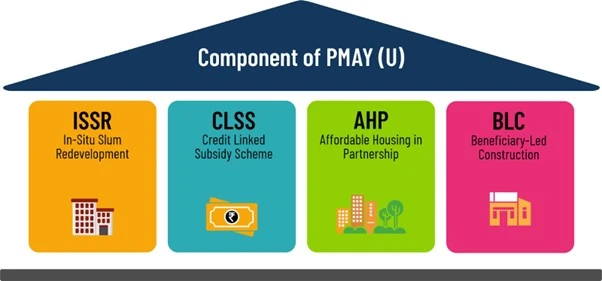
About Pradhan Mantri Awas Yojana (PMAY):
- The Government of India launched the Pradhan Mantri Awas Yojana (PMAY) in 2015-16 with the objective of providing assistance to eligible rural and urban households for constructing houses equipped with basic amenities.
- The newly formed government has approved the proposal to provide 3 crore additional rural and urban houses under PMAY.
- The scheme has two components: PMAY-U for the urban poor and PMAY-G and PMAY-R for the rural poor.
PMAY-U (Urban):
- The Ministry of Housing and Urban Affairs has been implementing PMAY-U under ‘Housing for All’ Mission since June, 2015.
- Objective: To provide housing for all segments of society in urban areas.
- Beneficiaries: Economically Weaker Section (EWS), Low-Income Group (LIG), and Middle-Income Group (MIG).
- Subsidy Schemes:
- Credit Linked Subsidy Scheme: Offers interest subsidy on home loans for EWS, LIG, and MIG categories.
- In-Situ Slum Redevelopment: Uses existing land to provide housing to eligible slum dwellers.
- Affordable Housing in Partnership: Promotes collaboration between public and private sectors to develop affordable housing projects.
- Beneficiary-Led Construction: Provides financial assistance to individuals for self-construction or improvement of their houses.
PMAY-G (Gramin):
- In order to achieve the target of “Housing for All” in rural areas, the Ministry of Rural Development is implementing PMAY-G with effect from 1st April 2016.
- Objective: To provide pucca houses with basic amenities to rural families who are homeless or living in kutcha or dilapidated houses.
- Beneficiaries: Identified using the Socio-Economic and Caste Census (SECC) 2011.
- Features:
- Financial Assistance: Provided financial Assistance of Rs.1.20 lakh in plain areas and Rs.1.30 lakh in hilly States (including North-eastern States and UTs of Jammu & Kashmir and Ladakh), difficult areas and Integrated Action Plan (IAP) districts.
- Construction: Overall target to construct 2.95 crore pucca houses with basic amenities by March, 2024.
- Convergence with Other Schemes: Promotes collaboration with schemes like Swachh Bharat Mission (SBM) for toilet construction( Rs.12000/) and Mahatma Gandhi National Rural Employment Guarantee Act (MGNREGA) for wage employment.
Importance and Progress of Pradhan Mantri Awas Yojana (PMAY):
- In a nation where millions aspire to own a home, the Pradhan Mantri Awas Yojana (PMAY) stands as a beacon of hope and progress.
- It underscores the government’s unwavering commitment to providing affordable housing and enhancing the quality of life for its citizens.
- PMAY is not merely a housing scheme; it embodies a mission to empower individuals with dignity and security.
- Over the past decade, PMAY has successfully completed construction of a total of 4.21 Crore houses for eligible poor families across the country
Source: PIB
2025 Year of Quantum Science and Technology
Why in the News?
- The United Nations has designated 2025 as the 'International Year of Quantum Science and Technology' to enhance global awareness of the importance of quantum science and its applications.
- Spearheaded by Mexico and endorsed by nearly 60 countries, this initiative seeks to foster activities across various domains to underscore the significance of quantum science and technology on a global scale.
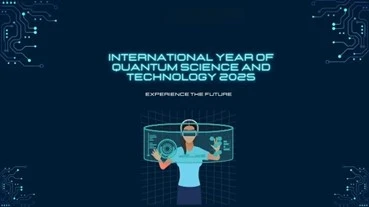
What is Quantum Science and Technology ?
- About
- Quantum Science and Technology integrates principles of quantum mechanics with practical applications.
- Quantum mechanics explores particle behaviour at atomic and subatomic levels.
- This field aims to apply quantum principles to innovate and enhance technological advancements.
- Key Concepts
- Superposition: Particles can exist in multiple states simultaneously until observed or measured.
- Entanglement: Particles can be interconnected so that the state of one instantaneously affects another, regardless of distance.
- Quantum Computing: Utilises quantum bits (qubits) capable of superposition, allowing for simultaneous execution of multiple computations.
- Quantum Cryptography: Applies quantum mechanics to develop secure communication systems.
|
What is Quantum & Quantum Theory ? ● Quantum” refers to the smallest discrete unit of any physical quantity involved in an interaction according to quantum theory. ● Quantum theory is a fundamental theory in physics that provides a description of the physical properties of nature at the scale of atoms and subatomic particles. |
Applications and Usefulness:
- Quantum Computing:
- Speed and Efficiency: Quantum computers excel at solving complex problems much faster than classical computers.
- Optimization: Applied in logistics, finance, and material science to optimise large datasets efficiently.
- Cryptography: Capable of breaking traditional encryption methods, driving the development of more secure cryptographic techniques.
- Quantum Cryptography:
- Secure Communication: Quantum Key Distribution (QKD) ensures communication security by preventing eavesdropping.
- Data Protection: Provides unbreakable encryption based on quantum mechanics principles.
- Quantum Sensing:
- Precision Measurement: Quantum sensors achieve unprecedented precision in measuring physical quantities like time, gravity, and magnetic fields.
- Medical Imaging: Enhances medical diagnostics and treatments through advanced imaging techniques.
- Quantum Materials:
- Superconductors: Enable electricity transmission without resistance, enhancing efficiency in power grids and electronic devices.
- Topological Insulators: Unique materials with applications in advanced electronics and quantum computing.
- Quantum Communication:
- Internet Security: Quantum networks offer highly secure communication channels.
- Satellite Communication: Quantum satellites support secure long-distance communication.
- Fundamental Research:
- Understanding the Universe: Provides deep insights into the fundamental nature of reality, advancing theoretical and applied physics.
- New Technologies: Potential to unlock revolutionary technologies and materials that defy current imagination.
Steps taken by India to promote Quantum S&T:
- The Government of India announced a National Quantum Mission in April 2023 at a cost of Rs 6,000 crore, to be implemented from 2023 to 2031 by the Department of Science & Technology (DST).
- It will have four verticals: quantum computing, quantum communication, quantum sensing and metrology, and quantum materials and devices.
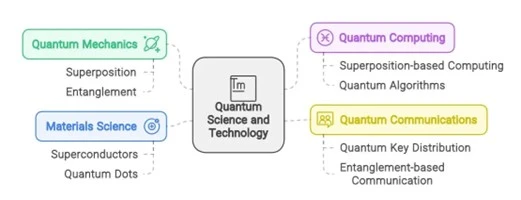
Process by which the United Nations declares an international year:
- Proposal Submission:
- A member state, group of member states, or a UN agency initiates the process by submitting a proposal for an international year.
- This proposal is typically submitted through a relevant UN agency and includes details on the theme, objectives, and relevance of the proposed international year.
- For example, India proposed the International Year of Millets for 2023 through the Food and Agriculture Organization (FAO).
- Review and Endorsement:
- The proposal undergoes review by relevant UN bodies such as the Economic and Social Council (ECOSOC) or other specialised agencies.
- Review assesses the feasibility, potential impact, and alignment with UN goals and priorities.
- Consultation and Support:
- The proposal is subject to consultation with other member states, relevant UN agencies, and stakeholders to garner support and refine the proposal.
- Broad consensus and support from member states are crucial for advancing the proposal.
- Drafting a Resolution:
- Once sufficient support is gathered, a draft resolution is prepared.
- This resolution outlines the rationale, objectives, and planned activities associated with the international year.
- Adoption by the General Assembly:
- The draft resolution is presented to the UN General Assembly for consideration.
- The General Assembly debates the proposal and, if there is broad support, adopts the resolution declaring the international year.
- The resolution requires a majority vote in the General Assembly plenary session for adoption, typically a simple majority.
- Monitoring and Reporting:
- Throughout the international year, the UN monitors the progress of activities and initiatives.
- At the conclusion of the year, a report is prepared to evaluate outcomes and assess the impact of the international year's initiatives and event
2025 be International Year of Quantum Science and Tech:
- In May 2023, Mexico spearheaded a resolution for the International Year of Quantum Science and Technology, garnering support from numerous countries.
- By November 2023, nearly 60 countries had co-sponsored the resolution, which was formally adopted during the UNESCO General Conference.
- In May 2024, Ghana presented a draft resolution to the UN General Assembly seeking official proclamation, supported by over 70 countries.
- On June 7, 2024, the UN General Assembly formally declared 2025 as the International Year of Quantum Science and Technology.
- 2025 marks the 100th anniversary of German physicist Werner Heisenberg's seminal paper that redefined classical mechanics to incorporate quantum principles, setting the stage for quantum mechanics.
- Heisenberg was awarded the Nobel Prize in Physics around the same time he formulated the renowned uncertainty principle
|
UPSC Civil Services Examination PYQ Prelims: Q:1 Which one of the following is the context in which the term “Qubit” is mentioned?(2022) (a) Cloud Services (b) Quantum Computing (c) Visible Light Communication Technologies (d) Wireless Communication Technologies |
Source: TH
Lipulekh Pass
Why in the news?
- Recently, Indian traders are advocating for the reopening of border trade with China through Lipulekh Pass, which was closed during the Covid-19 pandemic.
 About Lipulekh Pass:
About Lipulekh Pass:
- Location: Located in the Kumaon region of Uttarakhand, India, Lipulekh Pass is situated near the tri-junction of India, China, and Nepal.
- Pilgrimage Route: Lipulekh Pass serves as a crucial route for pilgrims travelling to Kailash Mansarovar in Tibet, facilitating religious and cultural exchanges.
- Strategic Importance: It is one of the vital points connecting India and Tibet, alongside other passes like Nathu La and Shipki La.
- Territorial Dispute: Nepal asserts territorial claims over the pass, contending that it lies within Nepalese territory. Conversely, India maintains that Lipulekh Pass is part of the Indian state of Uttarakhand.
- Infrastructure Development: In 2020, India inaugurated a new road connecting Dharchula in Uttarakhand to Lipulekh Pass, aimed at enhancing connectivity and facilitating smoother passage for pilgrims and traders.
Source: ET
SpaceX’s Starship Mega Rocket
Why in the news ?
- Recently, SpaceX's Starship rocket has achieved its first fully successful test flight, marking a significant milestone in SpaceX's quest to develop a fully reusable rocket system.
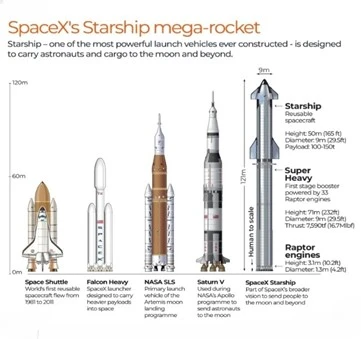 What is Starship?
What is Starship?
- Starship is an advanced two-stage heavy lift-off vehicle intended for transporting crew and cargo to Earth orbit, the Moon, Mars, and beyond. It towers at nearly 120 metres in height, surpassing the Saturn V rocket.
Components:
- Super Heavy Booster:
- Equipped with 33 Raptor engines that produce 74 meganewtons of thrust, compared to NASA’s Space Launch System's (SLS) 39 meganewtons and Saturn V's 35 meganewtons.
- Uses a 3.6:1 ratio of liquid oxygen and liquid methane.
- Fully reusable, designed to re-enter Earth’s atmosphere and land at the launch site.
- Starship Spacecraft:
- Consists of six Raptor engines and four landing fins.
- Fully reusable, capable of re-entering Earth’s atmosphere after completing its mission.
Benefits of Starship:
- Cost Efficiency: For instance, Starship could deliver 100 tonnes to Mars for approximately $50 million, significantly lower than previous missions.
- Heavy Lift Capabilities: Capable of transporting up to 150 tonnes to low Earth orbit and a minimum of 100 tonnes to the Moon and Mars.
- Key Role in Artemis: Integral to NASA’s Artemis program, which aims to return astronauts to the Moon by 2030 and pursue missions to Mars thereafter.
- Support for Larger Payloads: Enables the launch of larger space telescopes, heavier scientific instruments, and equipment like drilling rigs for Moon and Mars missions.
- Exploration Potential: Scientists can deploy larger and more sophisticated instruments, such as drilling rigs, to explore the Moon and Mars in unprecedented detail, advancing our understanding of these celestial bodies.
- Sample Return Missions: Starship’s capability to return to Earth enables the retrieval of valuable samples from other planets. This capability is crucial for scientific research, allowing scientists to analyse extraterrestrial materials in laboratories on Earth.
- In-Orbit Refuelling: This feature allows Starship to refuel in space, akin to how planes refuel mid-flight. It promises significant cost reduction by minimising downtime between missions and maximising operational efficiency.
- Fully Reusable Design: Unlike traditional rockets that require costly hardware replacement after each launch, Starship’s components are designed for reuse. This approach reduces mission costs substantially over time.
Challenges with Starship:
- Proving Viability: SpaceX faces the challenge of demonstrating Starship’s safety and reliability while maintaining cost-effectiveness. Historically, reusable spaceflight programs, like NASA’s Space Shuttle, have struggled with balancing these factors.
- Slow Progress: Despite rapid technological advancements, Starship's development has been slower than initially expected. This slower pace has also resulted in significant costs for SpaceX.
- Workplace Safety Concerns: A 2023 Reuters investigation raised concerns about workplace injuries and safety issues at SpaceX. These concerns were attributed to the aggressive development schedule and the pressures associated with meeting ambitious timelines.
Source: IE
Cascadia Subduction Zone
Why in the news?
- A recent study warns that major US cities are at risk of catastrophic quakes due to the Cascadia Subduction Zone.
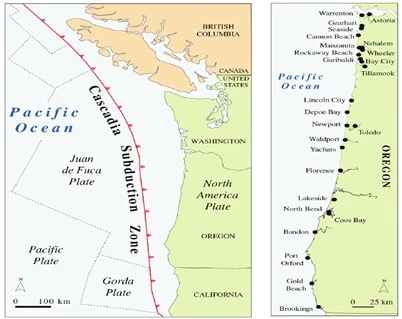 Cascadia Subduction Zone (CSZ):
Cascadia Subduction Zone (CSZ):
- Location and Extent: The CSZ is a 960 km fault located off the Pacific coast, stretching from northern Vancouver Island in Canada to Northern California in the United States.
- Seismic Potential: It is capable of producing 9.0+ magnitude earthquakes and tsunamis that can reach heights of up to 30 metres.
- Tectonic Activity: This zone is a long, sloping subduction area where the smaller oceanic plates—Explorer, Juan de Fuca, and Gorda—move eastward and subduct beneath the larger continental North American Plate.
- Geological Processes: The region is shaped by various tectonic activities such as accretion, subduction, deep earthquakes, and active volcanism in the Cascade Range.
- Notable Eruptions: Significant volcanic eruptions influenced by the CSZ include:
- Mount Mazama approximately 7,500 years ago.
- Mount Meager massif around 2,350 years ago.
- Mount St. Helens in 1980
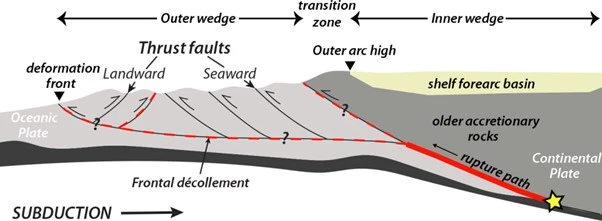
- (Left) A schematic cross section of the Cascadia Subduction Zone shows the ocean floor plate (light grey) moving under the North American continental plate.
- The fault zone is not a continuous structure but is divided into at least four segments and is divided by buried features, including big faults.
- Causes of the segmentation: Differing composition of rocks at the rigid edge of the overriding North American continental plate as they are formed at different times, with some being denser than others.
- This causes the incoming, more pliable oceanic plate to bend and twist to accommodate differences in overlying pressure.
|
● Megathrust fault is a place where tectonic plates move against each other in a highly destructive manner. Such a fault off Japan caused the 2011 Fukushima nuclear disaster. ● Megathrust earthquakes are the most powerful on Earth, and they arise from subduction zones. |
Source: (NDTV)
European Parliament election: The rise of right-wing parties
Why in the news?
- The recent European Parliament elections, in which around 51% of over 370 million eligible voters from 27 EU nations voted, showed a surge in support for right-wing and far-right parties, leading in losses for largely left-leaning and liberal parties.
 What is the European Parliament?
What is the European Parliament?
- The European Parliament is a fundamental institution of the European Union (EU), directly elected by citizens from its 27 member states.
- 19 of these countries use EURO as their official currency. 8 EU members (Bulgaria, Croatia, Czech Republic, Denmark, Hungary, Poland, Romania, Sweden) do not use the euro.
- It provides democratic legitimacy to EU decisions and policies. The Parliament is composed of 720 seats allocated through a system of degressive proportionality.
- This approach ensures that smaller member states elect a proportionally higher number of Members of the European Parliament (MEPs) than their populations might otherwise dictate.
What are the Objectives of the EU?
- Achieve sustainable development based on balanced economic growth and price stability, a highly competitive market economy with full employment and social progress, and environmental protection.
- Promote peace, values, and the well-being of all EU citizens.
- Offer freedom, security, and justice without internal borders.
- Combat social exclusion and discrimination.
- Promote scientific and technological progress.
- Enhance economic, social, and territorial cohesion and solidarity among EU countries.
- Respect the rich cultural and linguistic diversity within the EU.
- Establish an economic and monetary union with the euro as its currency.
Eligibility Conditions for Voting in European Parliament Elections:
- Voting Age Requirements:
- In 21 member states, individuals aged 18 and above are eligible to vote.
- Belgium, Germany, Austria, and Malta have a minimum voting age of 16.
- In Greece, individuals who turn 17 during the election year are eligible to vote.
- In Hungary, married individuals can vote regardless of their age.
- EU Voting Abroad Rules:
- EU citizens have the right to vote either in their country of origin or from abroad.
- Voting from abroad is permitted in all member states except Czechia, Ireland, Malta, and Slovakia.
- In Bulgaria and Italy, this right is applicable only to EU citizens residing within the EU.
- Citizens residing in another EU country can choose to vote for candidates either from their country of origin or from their country of residence.
- One-Country Voting Rule:
- Voters must decide which country's Members of the European Parliament (MEPs) they will vote for.
- It is not permissible to vote in elections for MEPs from more than one country simultaneously.
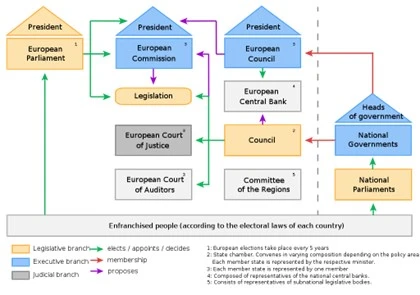 Eligibility of Candidates in European Parliament Elections:
Eligibility of Candidates in European Parliament Elections:
- Selection of Candidates: Candidates must be citizens of a European Union (EU) member state. Voters have the option to vote for individual candidates or for political parties' lists of candidates, depending on the electoral system of each member state.
- Alignment in European Parliament: Once elected, MEPs align themselves with political groups in the European Parliament based on their ideological and political orientations.
- Restrictions: Elected MEPs are prohibited from concurrently holding positions in national governments or other EU institutions such as the European Commission.
- MEP Allocation:
- MEP allocation follows the principle of degressive proportionality, where MEPs from larger countries represent more constituents than those from smaller countries.
- Each EU member state is guaranteed a minimum of six MEPs, while the maximum number any country can have is capped at 96
Major Players in the New European Parliament:
- European People’s Party (EPP): A centre-right political group advocating for Christian democratic and conservative values. Traditionally one of the largest groups in the Parliament.
- Progressive Alliance of Socialists and Democrats (S&D): A centre-left group promoting social democracy and progressive policies. Historically a major force in the Parliament.
- Renew Europe: A liberal-centrist group focusing on pro-European integration, market economy, and individual freedoms.
- Greens/European Free Alliance (Greens/EFA): A coalition of green and regionalist parties advocating for environmental sustainability, social justice, and regional autonomy.
- European Conservatives and Reformists (ECR): A conservative group promoting Eurosceptic and reformist policies, advocating for national sovereignty and decentralisation.
- Identity and Democracy (ID): A right-wing populist and Eurosceptic group emphasising national sovereignty, immigration control, and cultural conservatism.
- Left Group (GUE/NGL): A left-wing group advocating for socialist, communist, and other progressive ideologies, focusing on social justice, workers' rights, and environmental sustainability.
Impacts of Election Results:
- EU Policy Direction:
- Election results influence the EU's approach to critical issues such as climate change, migration, and international relations.
- Shifts in parliamentary composition may lead to adjustments in policy priorities and strategies.
- Rise of Right-Wing and Far-Right Parties:
- The electoral success of right-wing and far-right parties can prompt a more conservative stance on certain policies within the EU.
- These parties often advocate for stricter immigration policies and emphasise national sovereignty over EU integration.
- National Political Landscape:
- Election outcomes can impact the stability of national governments across Europe.
- For example, poor electoral performances in European Parliament elections have led leaders like Emmanuel Macron to consider strategic responses, such as calling for snap polls to shore up domestic support.
- Broader Political Trends:
- The composition of the European Parliament reflects broader political trends in Europe, including concerns over immigration, national identity, and scepticism towards certain EU policies.
- Pressure on Centre-Right Parties:
- Increased electoral competition from right-wing factions has pressured traditional centre-right parties to adopt more stringent positions on immigration.
How Cordial are EU’s Relations with India?
- Financial Relations:
- The EU emerged as India’s third-largest trading partner in 2021.
- EU foreign direct investment (FDI) in India reached €87 billion in 2020.
- Approximately 15% of Indian exports were directed to the EU in 2021.
- Trade in goods and services between India and the EU amounted to €95.5 billion in 2020.
- The European Investment Bank (EIB) has invested over €3 billion in infrastructure, energy, and climate projects in India.
- Strategic Partnerships:
- EU-India Joint Declarations have been adopted to strengthen cooperation on connectivity, water, and resource efficiency, emphasising a circular economy approach.
- In 2023, the EU and India launched a Trade and Technology Council, focusing on digital transformation and green technologies.
- Neighbourhood, Development, and International Cooperation:
- Under the Neighbourhood, Development, and International Cooperation Instrument (NDICI-Global Europe), India is slated to receive €90 million in grant funding for the period 2021-2027.
- India also benefits from various multi-country EU programs aimed at fostering development and cooperation in the region
Conclusion:
Thus, the outcome of the European Parliament elections indicates a growing influence of right-wing parties, influencing EU policies on immigration and other critical issues. This may also have ramifications for national politics, potentially impacting the stability of leadership positions.
Source: IE
Share the article
Edukemy’s Current Affairs Quiz is published with multiple choice questions for UPSC exams
MCQ
Get Latest Updates on Offers, Event dates, and free Mentorship sessions.

Get in touch with our Expert Academic Counsellors 👋
FAQs
UPSC Daily Current Affairs focuses on learning current events on a daily basis. An aspirant needs to study regular and updated information about current events, news, and relevant topics that are important for UPSC aspirants. It covers national and international affairs, government policies, socio-economic issues, science and technology advancements, and more.
UPSC Daily Current Affairs provides aspirants with a concise and comprehensive overview of the latest happenings and developments across various fields. It helps aspirants stay updated with current affairs and provides them with valuable insights and analysis, which are essential for answering questions in the UPSC examinations. It enhances their knowledge, analytical skills, and ability to connect current affairs with the UPSC syllabus.
UPSC Daily Current Affairs covers a wide range of topics, including politics, economics, science and technology, environment, social issues, governance, international relations, and more. It offers news summaries, in-depth analyses, editorials, opinion pieces, and relevant study materials. It also provides practice questions and quizzes to help aspirants test their understanding of current affairs.
Edukemy's UPSC Daily Current Affairs can be accessed through:
- UPSC Daily Current Affairs can be accessed through Current Affairs tab at the top of the Main Page of Edukemy.
- Edukemy Mobile app: The Daily Current Affairs can also be access through Edukemy Mobile App.
- Social media: Follow Edukemy’s official social media accounts or pages that provide UPSC Daily Current Affairs updates, including Facebook, Twitter, or Telegram channels.

